
ASRock X99 Extreme 11 Review
Manufacturer: ASRockUK price (as reviewed): £544.79 (inc VAT)
US price (as reviewed): $619.99 (ex Tax)
There's no doubt that Intel's X99 chipset and associated motherboards currently represent the pinnacle of desktop PCs and while your average LGA2011-v3 system is expensive, the lure of those extra PCI-E lanes and additional CPU cores is strong.
ASRock's efforts in the X99 arena have been good and the ASRock Fatal1ty X99M Killer, for example, is easily a match for Gigabyte's X99M-Gaming 5. This is especially important seeing as Asus is absent in the X99 micro-ATX market but today's contender is slightly more ambitious. In fact, the X99 Extreme 11 is one of the most expensive X99 motherboards on the market.
However, there are a few pretty good reasons for this. Firstly, and you're probably still counting them, there are more than a few SATA ports. In fact the 18 ports here include eight that are 12Gbps SAS-capable, although installing the driver for the LSI 3008 controller also allows you to use them SATA 6Gbps mode. The Intel portion supports RAID 0, 1, 5 and 10 modes as per usual, while the LSI 3008 complement lacks RAID 5.
In addition to the 18 SATA ports, there are also two PCI-E 3.0 x4 M.2 ports, which share bandwidth with the SATA ports, spaced between the five main PCI-E 3.0 slots. Four of these can run at full x16 speed, while one - the middle one - is limited to x8 speed. Combined with the copious amounts of storage, in particular the two x4 M.2 ports, in order to offer such a lavish multi-GPU setup with the potential for four-way x16 configurations, ASRock has had to employ two PLX8747 PCI-E 48-lane switches.
Click to enlarge
Things get pretty complicated when you delve into the lane allocation detals but it boils down to the fact that the PLX switches can essentially double or even quad-bump PCI-E lanes from the CPU. In this case, assuming you're using a 40-lane CPU (Core i7-5930K or Core i7-5960X), the two PLX switches each scales up 16 lanes to 32 lanes to cater for the four main PCI-E slots running at a potential x16/x16/x16/x16 arrangement. There's clearly potential for an absolutely monster setup, but perhaps more interestingly is that the two PLX switches also allow for the maximum x16/x16/x16/x16 arrangements when only using the 28-lane Core i7-5820K as well, although one of the M.2 slots is sacrificed as a result of not enough lanes being available. Note that data travelling between the CPU and the PLX switches is still limited to 40 or 28 lanes depending on the CPU. The switches simply mean that the lane allocation can be switched on the fly, with all main slots capable of being allocated a full 16 lanes.
Click to enlarge
There are obviously five 16x PCI-E slots in total and you can fill all five, but both the middle and fourth slots will then run at x8 speed, although this isn't likely to result in significant bottlenecks. As the two M.2 ports sandwich the middle three 16x PCI-E slots, two-way setups, which use the first and fourth slots, benefit from increased space between graphics cards, which will please air-cooled AMD GPU owners especially. Likewise, in three-way and four-way setups, the third slot is always vacant.
Click to enlarge
The motherboard itself features one of ASRock's bold colour schemes but all those extra controllers require some hefty cooling too. A large heatpipe array stretches around the whole PCB and there's even a small fan in the main heatsink too. This is a tad on the noisy side; air-cooled systems will likely see the rest of the hardware drowning it out but if you're water-cooling everything, then it's going to be an annoyance. Sadly, while you can control the fan's speed in the EFI, the minimum setting is 70 percent, which doesn't do much to cut the noise. Seeing as the heatsink isn't isolated from the other heatsinks, you can detach the fan connector from the motherboard, but as the heatsink itself gets pretty toasty when the system's under load, we'd advise checking temperatures in your particular system to make sure things aren't too toasty.
Click to enlarge
There's a fine array of overclocking tools on the PCB, including dual BIOS chips, power and reset buttons as well as an LED POST code display with a CMOS clear button on the rear I/O panel. Audio is provided by an uprated Realtec ALC1150 with a claimed 115dB SNR, there are 12 power phases plus dual Intel Gigabit Ethernet ports and USB 3 headers too.
Specifications
- Chipset Intel X99
- Form factor E-ATX
- CPU support Intel Socket 2011-v3 (Haswell-E, Xeon)
- Memory support Quad-channel, 8 slots, max 128GB
- Expansion slots Five 16x PCI-E 3.0 (CrossFireX and SLI support), up to x16/x16/x16/x16 or x16/x16/x8/x8/x16
- Sound 8-channel Realtek ALC1150
- Networking 1 x Intel's I218V, 1 x Intel I211AT
- Ports 2 x PCI-E 3.0 x4 M.2, 10 x SATA 6Gbps (Intel X99), 8x SAS 12Gbps/SATA 6Gbps (LSI 3008), 8 x USB 3.0 (4 via header), 8 x USB 2.0 (4 via header), 2 x LAN, audio out, line in, mic, Optical S/PDIF out
- Dimensions (mm) 305 × 330
- Extras SLI bridge cards, hard disk saver cable

MSI MPG Velox 100R Chassis Review
October 14 2021 | 15:04


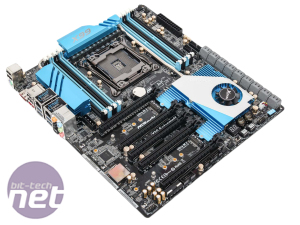
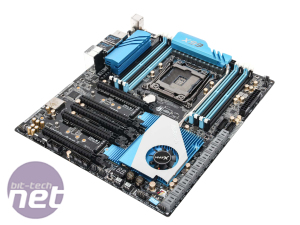
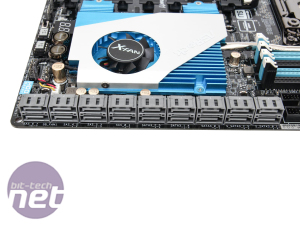

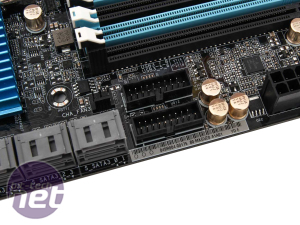
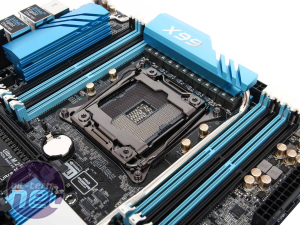
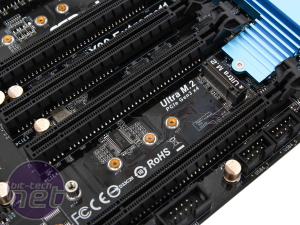
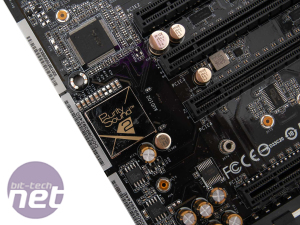







Want to comment? Please log in.